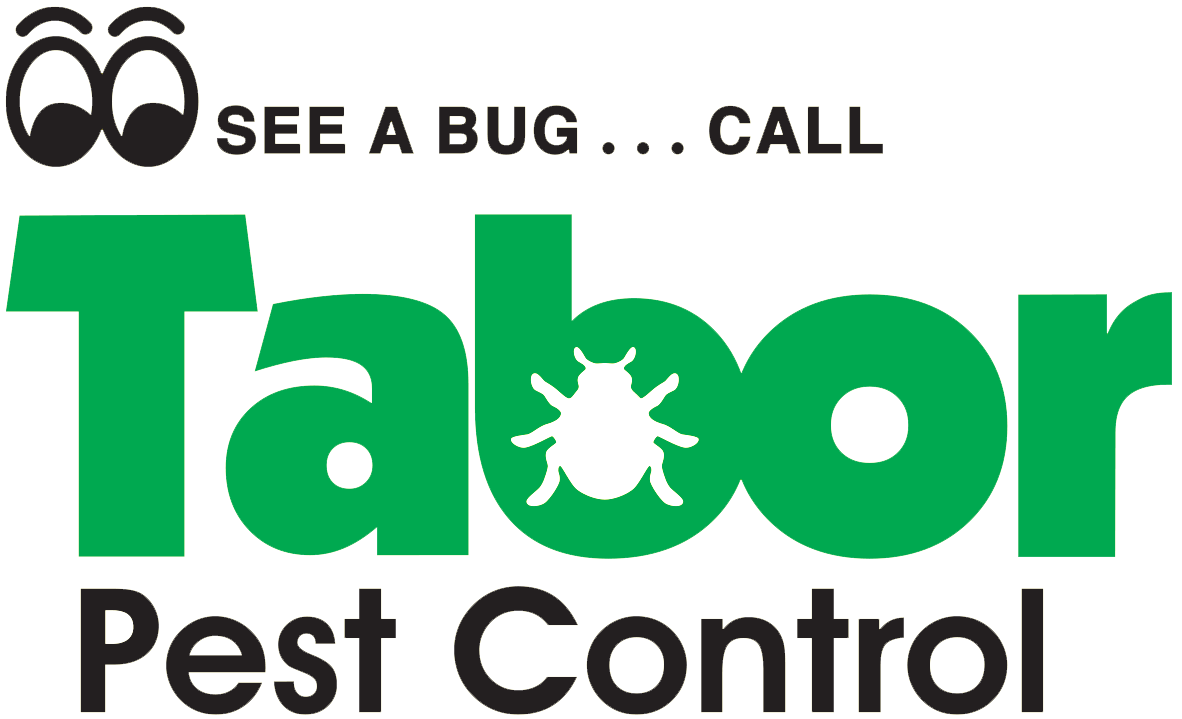Posts Tagged ‘Wasps’
Wasp Attack: How To Get Rid Of Wasps In House?
Posted on: April 26th, 2023 No CommentsWasps are considered one of the most dangerous pests to infiltrate your home. Their sting releases venom into our skin and its surrounding tissue. This results in immediate pain, inflammation, and swelling and, in rare cases, leads to life-threatening events.
So, running away and hiding inside is pretty common when you suddenly see a wasp coming your way. But what about finding a wasp inside your home instead? Of course, you’ll panic and want it out of the house immediately.
According to CDC, there were 1,109 deaths from hornets, wasps, and bee stings between 2000-2017, with 62 people losing their lives.
It becomes all the more important to get rid of this winged insect and get it done safely so it doesn’t come back again or end up stinging you in the process!
So let’s see different ways to remove wasps from your home safely.
4 types of wasps common in South Alabama and South Georgia
Wasps are common pests in the US throughout the summer months.
While they could be attracted to your home or around your home for reasons like the availability of food, shelter, sugar, and flowers, they’re not a pretty sight and are often dangerous to be around.
Here’re some of the common wasp species to watch out for if you’re living in South Alabama and Georgia region:
1. Paper Wasp

This species is known as a paper wasp because their nest is made of paperlike material, fashioned wood that the females have chewed from dead trees, fence posts, or unpainted building lumber and mixed with saliva to form a paste.
Their nest usually has about 100 cells. They are 16mm in size with orange antennae, wings, and tarsi.
You can recognize them as their body may be jet black or brown with narrow yellow bands and paired segmental spots.
Of course, their sting is painful, but they don’t attack unless and until their nest is disturbed. So, they rarely sting as they mostly shy away from humans unless their nest is near your home.
2. Yellowjacket Wasp

This is another species of wasp commonly found in South Alabama and Georgia.
They’re also the most difficult ones to deal with. Especially ground and cavity nesting ones such as the western yellowjacket, which tends to defend their nests vigorously when disturbed.
During their season, the colony becomes larger. When things diminish in the fall, the species move to find food and shelter at random places.
They are medium-sized and black with jagged bands of bright yellow.
Their sting is smoother than other wasps, so you could be stung multiple times, only realizing it when the venom spreads, and the sting becomes painful. It gives severe pain and a burning sensation lasting for about 2 hours with swelling lasting for days.
3. Mud Dauber Wasp

Mud dauber wasp constructs their nest of mud. They are long and slender with a thread-like waist and are usually black but might have pale markings or a metallic luster.
They are not dangerous. If you see their nests with holes, they are inactive or old.
Since they aren’t aggressive and unlikely to sting, there’s not much danger, but still, you need to be careful of them.
If they end up stinging, the symptoms resemble a typical bug bite. However, their venom is mild, so you won’t experience severe pain or swelling like that with other wasps.
4. Bald-faced Hornets

Bald-faced hornets are a relative of the yellowjacket wasp. It gets its name due to the largely black color and mostly white face. Due to its large size and aggressive nature, it’s termed a hornet.
They have two slanted lines running from their midsection towards their head and on the latter part of their abdomen. Their upper midsection almost looks triangular from the side.
Their sting can hurt, itch, and swell up for about 24 hours, and since they’re aggressive, it’s most likely to happen. This is why a professional should remove them.
They have smooth stingers that can sting multiple times, unlike other wasps!
How can I identify a wasp infestation?
A wasp could enter your home by mistake in hopes of seeking shelter, or there could be a wasp infestation in or around your home.
None of us want to deal with a wasp infestation on our own, but if that’s the case, the situation is even worse than you imagined and far more dangerous.
This could lead to a halt in your activities and prove to be a major inconvenience.
You must become aware of a possible infestation so that you can call on professional services to deal with the situation.
1. Signs of wasp activity
If there’s only one swarming wasp and you don’t find others with it, it’s probably a stray you could deal with alone. But others could also be with it, indicating a possible infestation nearby.
Wasps tend to leave their nest to get food several times a day. You can notice this with the help of the buzzing sound they produce, which is loud enough not to ignore.
If there’s more than one, you can also hear others buzzing.
2. Locating nests inside or around the house
Wasp nests are dull grey or brown, resembling a paper ballon. There would be several patterns with layers, with different cells inside for wasps.

Once you’ve found the nest, which is pretty easy to locate considering the buzzing noise and the size of the nest, which is quite visible even from far away, you do not want to go near the nest without a proper plan.
3. Dangers of ignoring a wasp infestation
Usually, if you have a yard, it would attract wasps, mainly during the summertime. If the species of wasp isn’t aggressive, it won’t harm you unless you provoke them. They often leave once summertime is over.
However, there’re times when nest removal is of utmost importance. These instances include:
- Wasp stings hurt, but they could also be allergic to the extent that a person could end up losing their life.
- These nests don’t cause as much property damage as other pests, but there’s still some damage.
- People who have a wasp phobia
- The severe swelling and pain
Safety precautions when dealing with wasp
The worst thing you can do around a wasp is not following proper safety instructions.
If you have located a wasp in your home, be it one or more, you should take proper precautions around them.
If you’re considering using a bug spray, it doesn’t have much effect on these stinging insects. What would happen is they would get aggressive and come to sting you with more force. Instead, focus on the following steps:
1. Wearing protective clothing and gear
Wear appropriate clothes, including full-sleeve shirts, long pants, and shoes that expose no skin.
Tape your loose pants with the boots. This way, wasps can’t fly inside your clothing. Similarly, wear a tight-fitted shirt or t-shirt, leaving no room for wasps to get inside.
Wear light-colored clothing and avoid brightly colored, patterned, or black clothing. Another thing to focus on is if you’ve long hair, tie it so wasps can’t get inside and tangled in your hair.
You shouldn’t wear colognes, perfume, scented soaps, or powder as it attracts wasps. Also, don’t be barefoot when you know wasps are around.
2. Being aware of potential allergic reactions
Wasps don’t leave their sting in you. So they can sting multiple times.
A wasp sting will hurt some more than others and could be deadly. A typical reaction would be getting an inflammation that leaves your skin red with severe itching. You will feel as if your skin is burning, and stabbing pain will be present.
In severe cases, it could also lead to anaphylaxis, a potentially life-threatening reaction that may impair breathing and cause the body to go into shock.
You can disinfect the area and apply ice to reduce swelling. A significant allergic reaction could lead to swelling spreading over other body parts.
An allergic reaction could also lead to hives, abdominal cramping, vomiting, intense nausea or diarrhea, tight chest tightness, and difficulty breathing.
Immediately seek medical attention if you don’t feel well or witness the above symptoms.
3. Avoiding wasps during their most active times
It’s the summertime when wasps are most active. They would be building their nest nearby, and if you’ve got a yard, then there’s a huge possibility that it would attract wasps.
Avoid roaming your yard without proper safety precautions during this time. Even when you go inside, close your door correctly, and your windows should have a mesh screen to avoid insects getting inside.
3 DIY methods for removing a wasp nest
Don’t go near a wasp nest without taking proper safety precautions. You must follow safety regulations when trying to remove it yourself. However, the best solution to eliminate a wasp infestation is hiring professionals who can help you.
1. Soap and water solution
Try a soap and water solution if you see a small wasp nest. Mix two tablespoons of dish soap into a spray bottle of water and spray it directly on the nest.
Now, of course, you should wear appropriate clothes before attempting this, which isn’t a foolproof solution, and you could still get stung.
But the mixture of water and soap will clog the wasps breathing pores and successfully kill them.
2. Using a vacuum cleaner
You could eliminate wasps using a vacuum cleaner, although this isn’t feasible. A wet/dry vacuum can suck the wasps from the nest into a soap/water solution at the bottom.
Ensure the vacuum is in good working condition and has a long extension wire so you can move it around freely.
3. Wasp traps
People also use wasp traps which can get rid of them. These traps have a liquid that attracts wasps. So when wasps crawl into the trap, they get stuck and drown.
Replace these traps often to see if it’s working so new ones can get trapped and killed. It’ll only work if the nest is near your property but not where you often use that path.
When to call a professional
Although you might not fear the winged stinging insect that much and are willing to try killing them yourself, it’s neither recommended nor a good idea to do so.
A homeowner like yourself isn’t aware of the correct species or is trained in dealing with wasps. Dealing with wasps includes many precautions, and the risk of removing the nest is high as it could be deadly.
Trying to knock it down is the worst idea, so don’t even try to attempt it. It’s better to rely on trained professionals to deal with wasps.
This is what we at Tabor Pest Control are trained to do. With our expertise, safety equipment, and wasp removal methods, we can easily and effectively remove wasps and their nest from your property without causing property damage.
We at Tabor Pest Control do proper property inspections as our professionals are trained at finding and locating wasp nests and treating the wasp infestation with the utmost caution, along with pest control substances.
We also take further precautions by dealing with entry points like small cracks or holes. Our regular inspections and maintenance services will help you remain tension free about any possible wasp infestation in the future.
How do I stop wasps from coming back?
While you’re dealing with the current issues of finding wasps in your home and maybe dealing with a wasp infestation, you probably wouldn’t want to be in a similar situation. To avoid this from happening again, you should focus on the following details:
1. Sealing entry points and gaps
You need to pay attention to any secret openings in your property from where wasps could get in, including small cracks. Fill these gaps and holes in and around your property so a wasp nest can’t be built.
The windows should have mesh screens so wasps can’t fit inside and infiltrate your home.
2. Removing food source
If you have a yard or a lot of greenery around your home, pay attention to the maintenance. For example, remove fallen fruits or berries around your home and immediately clean up your food waste.
The garbage cans outside should be tightly sealed at all times because if they’re slightly open or not covered, wasps will immediately go to them as a food source.
3. Regular inspection and maintenance
To avoid getting into a similar situation, you should focus on findings ways to prevent a wasp nest from building again.
To do that, while you can be on the lookout and make sure you’re removing food sources, sealing all your doors, windows, and cracks, and overall trying your best not to attract wasps, you should hire professional pest control services as well.
With their regular inspection and maintenance, they would apply treatments on your property to ensure wasps don’t build their nest during the peak season.
FAQs
How to kill a wasp immediately?
A DIY solution to killing wasps is using a mixture of soap and water. When used on the wasps, this mixture will clog their pores and kill them immediately.
An important thing to remember here is that it only works if there’re a couple of wasps to deal with. Using this on a wasp nest would mean you would need multiple bottles filled with this solution sprayed simultaneously in excessive quantities.
Otherwise, you’re bound to get stung as the risk in dealing with a nest is quite high.
How do I permanently get rid of wasps?
To get rid of wasps in a more permanent way, you should be careful with their entry points and what attracts them. An occasional wasp coming your way isn’t harmful and can happen anytime, but to avoid a nest from forming, you should keep a close eye on your property.
Regular inspections from professionals such as Tabor Pest Control can also help you remain stress-free from doing all this yourself. With our routine inspection and treatments to prevent nests from building in the future, your property won’t face a wasp infestation anymore.
What to do when a wasp is flying around you?
If you see a wasp has accidentally entered your home and you don’t know how to get rid of it, the first thing to do is not to panic. It would be best if you didn’t hit it with a magazine as this won’t kill the wasp but will make it more aggressive towards you.
Instead, try to stay calm and still and walk straight with arms down to get out of the room wasp is in.
Once you have the opportunity, wear clothes covering your whole body and prepare a DIY soap and water solution.
Protect your head and face when doing so. Use it on the wasp; it should die in 10 to 15 minutes. Then safely dispose of it in the dustbin and close the lid.
Tags: Wasps
Posted in Prevention & Control | No Comments »




